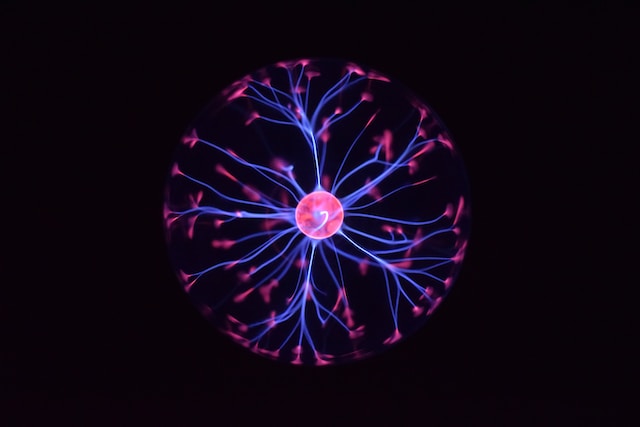Not every industry is built on idealism and realism in equal parts. This makes the realm of cryonics particularly interesting because pragmatism keeps optimism in check. In an interview with Klaus Hermann Sames, a German physician, anatomist, gerontologist and university professor emeritus, this balancing act was ever present. As well as delving into the opportunities offered by cryonics, Sames highlights the obstructions and complexities that it faces. The following are a few of the obstructions mentioned by Sames which have been considered in more detail.
Do bureaucratic boundaries cause technical difficulties?
Freezing a human body (or cryonic suspension as it’s known as in certain circles) before a person is declared legally dead carries with it the verdict of homicide, or, at best, assisted suicide. To avoid these complications, the ideal time to initiate the cooling process is immediately after legal death.
Ideal scenarios are rarely met however. In Germany for instance, one of the most prominent obstacles obstructing cryogenic suspension is the “enormously strict coroner’s request”, meaning that it can “takes hours before the body can be cooled” resulting in advanced “blood clotting, capillary damage, leukocyte adhesions and endothelial swelling in the blood vessels” which in turn makes perfusion more difficult. Starting the cooling process immediately after death is ideal in order to avoid these problems. So having a lengthy – in terms of cryonics at least – bureaucratic process between death and cryonic suspension significantly hinders the quality of freezing.
However, not all is lost! Recent studies have suggested that consciousness is a structural element of the brain rather than something abstract and unretainable after death. Additionally, the “complex series of processes” take longer “to run to completion” following reperfusion (the act of restoring blood flow to an organ or tissue) than previously thought. In fact, it is the blood vessels that are damaged throughout this process rather than the brain tissue – the latter of which seems to be, or at least could be, the storage space of consciousness.
This knowledge has opened a “window of opportunity” because “apoptosis of neurons takes many hours” meaning that the time between legal death and freezing might not result in the irreversible loss of consciousness. If this is the case, then the “ultimate basis of consciousness…can therefore be preserved at cryogenic temperatures.” Best goes on to further explain that it isn’t even necessarily essential to have a full understanding of how the brain functions in order to preserve the brain or for reanimation to be successful because: “[as] a kidney produces urine…a brain produces consciousness. [Therefore] a re-warmed brain…should be able to produce consciousness no less than a re-warmed vitrified kidney can produce urine.” The latter of which has been implemented successfully.
On the other hand, Sames raises doubts about the effectiveness of brain perfusion in the first place, doubting whether perfusion of every capillary area of the brain is possible at all. Clearly, an endurance of rationalism persists, thankfully, yet science provides cryonicists with a healthy dose of optimism to couple this.

Therefore, despite the bureaucratic complexities, there is hope for cryonics. Because, although the interim between legal death and freezing is problematic, it seems that the most vital components that establish us as sentient beings (our memories, emotions, personalities, etc) and their place of storage within the brain can remain intact longer than the time it takes to be officially declared dead.
The problem of storage space
Sames raises the problem of lack of storage space for patients. And although things have changed since the interview, it still remains a problem. To date, the largest storage center is the US, where Alcor and the Cryonics Institute’s storage facilities are located. On the European continent, Kriorus in Russia provides most of the storage space for cryopatients. Also, Yinfeng in China is actively making strides in the field of cryonics and has a storage facility, but at the moment they only provide services to the local population. Tomorrow Biostasis is actively developing in Western Europe, and currently completing the construction of its cryostorage facility in Switzerland. It is also worth mentioning the presence of a relatively new cryonics storage facility in Australia, Cryonics Australia.
It’s clear that this is not a huge list, considering that we are talking about cryonics facilities on a global scale. Consequently, until the storage facility in Switzerland is ready, many Europeans searching for a one way trip to the future will have to spend their mortality weighing up whether they want to be stored in Russia or the USA. The interviewee, Sames, shares this dilemma. For him, transportation to America is “indispensable”, and his choice of facility is the Cryonics Institute (CI) in America.
The lack of cryonic storage facilities in Europe is logistically problematic. This means that transportation to the USA, Russia, or even just to another European country – which can also be problematic – before death is vital. Not only is this costly, it can also be emotionally distressing too. Oddly enough, it means that a lengthy and incurable disease is ideal for those wanting to be cryopreserved because it gives the person time to get to the country and have a cryonics team on hand to act quickly after legal death has been confirmed. Although hoping for an incurable disease can, understandably, cause distress, in the realms of cryonics, this is actually preferable.

Although an issue, the lack of storage in Europe is solvable. The replication of a CI in Europe, the opening of new storage facilities is feasible and would mean that cryostorage within Europe and worldwide would be less costly and more logistically viable. Thus, there is still cause for optimism.
Money Talks
In America, The Cryonics Institute offers cryopreservation at a cost of $28,000 for members, or $35,000 for non-members. At the other end of the spectrum, Alcor’s costs range from $80,000 to $200,000. Tomorrow Biostasis offers insurance plans with coverage amounts $200,000-$300,000 which will be used for the cryopreservation process, including transportation and storage at the European Biostasis Foundation in Switzerland. The cheapest option is offered by Russian company KrioRus – from $15,000 for neuro-suspension (the brain only) and from $36,000 for whole-body suspension. Even though KrioRus still provides the cheapest option, according to the website, the best offers are available only for the locals.
The range of $15,000 to $300,000 could seem costly to some. However, the costs have been broken down in a more approachable way by Scandinavian philosopher Moen:

Whilst this breakdown puts the costs of cryopreservation into perspective, it is missing some extra costs and other crucial factors. Manzocco highlights that CI’s $28,000 offer omits the costs of “vitrification and stabilization with dry ice, transportation, funerary expenses”, in addition to the difficulty of finding “an insurance company willing to fund your cryonic suspension.”
Cryonics clearly isn’t for everyone – particularly not for those with a lack of finances (financial capital or just capital). However, the costs aren’t so extreme that cryopreservation is reserved for the wealthy elite, as it is often misconstrued to be. In fact, a significant portion of those cryogenically preserved are characteristically middle-class. This stretches the consumer base that cryogenics appeals to, which could create benefits for the industry in the future.
All in all
Considering the obstacles that Sames mentioned, it is clear that the challenges hindering the future success and current popularity of cryopreservation are varied. Finances, although not limiting to the extent that many believe, are still restrictive and a lack of storage facilities, as well as causing logistical complications, negatively impacts the financial factor too. Additionally, bureaucracy lengthens the time between legal death and the vitrification process, thus increasing the likelihood of physical internal fractures and decreasing the quality of preservation. However, it seems that the essence of consciousness is stored in areas of the brain which take longer to sustain irreversible damage than the length of the bureaucratic obstacles.
Equally, as Sames’ doubts about perfusion are secondary to his hopefulness regarding the future of cryonics, there is an opportunity to extend life through cryonics that can’t be provided anywhere else. Cryopreservation offers the individual a grain of hope. This grain is succinctly summarised by Moen who gives us this analogy:
“If you are trapped in a burning house, and your only chance of being saved is with help from firefighters, you have a good reason to call 911 even if you think the probability of the firefighters arriving in time is lower than 0.5. A small chance of survival is better than none, and a small chance is precisely what cryonics offers.”














